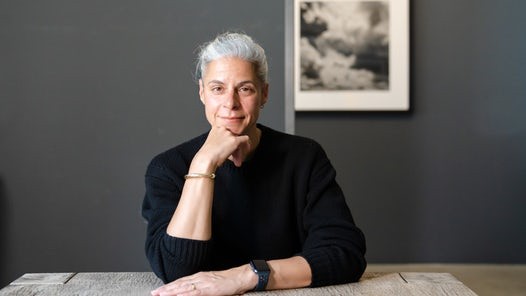Business of Fashion: UC alum heads Banana Republic men's design
DAAP grad Nicole Wiesmann talks about creating a purpose-driven design culture

Nicole Wiesmann/Business of Fashion
Business of Fashion recently interviewed design leaders at clothing and accessories retailer Banana Republic to discover how they foster a culture of optimism and enable employees to find purpose in creativity. One of those leaders, Head of Men’s Design Nicole Wiesmann, graduated from the University of Cincinnati — and has been working in fashion ever since.
After completing her fashion design degree at UC's College of Design, Architecture, Art, and Planning in 1993, Wiesmann went on to work for brands such as Tommy Hilfiger, Structure, Nautica and Vince. She first joined Banana Republic in 2003 and stayed until 2013, returning to the company four years later because of the “amazingly optimistic" culture there.
In her interview with Business of Fashion, Wiesmann talks more about company culture, the way technology has transformed the working environment, how to create purpose and a motivate a team, and what she looks for when hiring new talent.
Related Stories
UC celebrates Earth Day with greener, bolder moves
April 18, 2025
This year, UC’s Earth Day celebration honors a growing portfolio of eco-conscious achievements that stretch across the main and regional campuses. In a university-wide effort that bridges environmental science, design and community action, Bearcats are proving that green isn’t just a color — it’s a culture.
President Pinto announces interim provost
April 8, 2025
UC President Neville Pinto announced that Dr. John Weidner, dean of the College of Engineering and Applied Science, will step in as interim provost following Dr. Kristi Nelson's departure on June 1.
UC alum mentors DAAP student at Kimley-Horn co-op
April 8, 2025
Engineering consultancy Kimley-Horn is a co-op partner with the University of Cincinnati. Among the 1,000 students they accept from all over the country each year is Sophia Gartland, who finds the hands-on experience complements her studies at UC.
